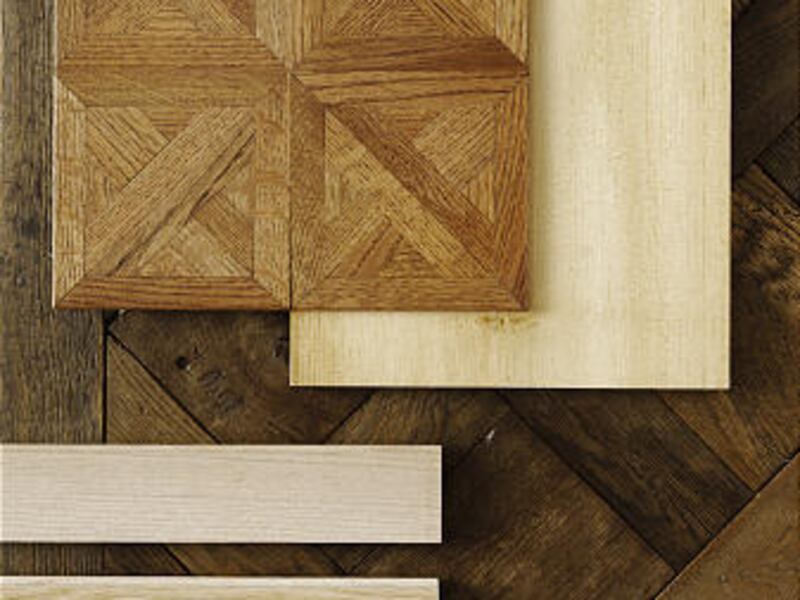Dear Martha: I have reclaimed-wood flooring in my home. How should I care for it?
A: Reclaimed wood, which has been salvaged from old structures such as barns and warehouses, is usually harder and more stable than new wood, says Jay Petre, owner of Renick Millworks, in Renick, W.Va. Provided your floors have been treated with a water- or oil-based finish, they can be maintained much like any new wood flooring. That said, it's a good idea to consult your installer and the finish manufacturer for care instructions and appropriate cleansers. But costly products aren't always necessary.
"Nothing beats a few capfuls of white vinegar in a bucket of water," says John Williams, senior sales representative at Mountain Lumber, in Ruckersville, Va.
Whether or not you use a suggested cleanser or a vinegar-water solution, it is important to wring the mop until it is only slightly damp, Williams says. Too much water can soften the finish and possibly warp the wood. Weather can also affect wood floors.
"Depending on the region and the climatic controls in your home, your floor will try to equalize itself by absorbing or releasing moisture," Williams says. Wood is stable at fairly standard room temperatures, from 65 F to 73 F, and levels of humidity, from 35 percent to 50 percent. (A humidifier or dehumidifier can help keep it in that range.)
Dear Martha: What exactly are sprouted grains?
A: A sprouted, or malted, grain is one that has been soaked until a tiny sprout emerges through the seed coat. Popular among some vegetarians and raw-food enthusiasts, sprouted grains, including wheat, spelt and barley, can be sprinkled atop salads or ground into flour for homemade bread. Sprouted loaves, pastas and cereals have also become available at health-food and some grocery stores.
As grains begin to sprout, some of the starches are converted into sugars, resulting in enzymatic changes. While proponents claim that this process predigests grains, making nutrients easier to absorb, few studies have explored this. The Whole Grains Council and AACC (American Association of Cereal Chemists) International recently found that the nutrient values of sprouted and unsprouted wheat are comparable.
Whether or not sprouted grains live up to grander claims, they are nonetheless counted as whole grains, which many nutritionists agree are an important part of a healthy diet. For tips on sprouting grains at home, visit marthastewart.com/sprouted-grains.
Dear Martha: How can I remove an applique from the bottom of my bathtub?
A: One way to accomplish this is to warm the entire decal with a hair dryer for a few minutes. The heat will loosen the adhesive, and you should be able to lift it. Use a plastic spackling knife to gently scrape off the applique, starting at the corners.
If some portions of the decal prove to be troublesome, try saturating the area with hot vinegar or Goo Gone, a product made from a citrus-based oil that's good for unsticking all manner of things. Let it sit for a few minutes, and then use the spackling knife once again.
Dear Martha: I've just built a lovely conservatory. What plants should I start with?
A: Begonias would be fabulous. They grow fast, are very showy and bloom once a year with great clusters of pink, white or yellow flowers. You can put begonias on your table as a flower arrangement; they're so amazing. I think you'd enjoy them tremendously.
I like clivias, too; they're similar to amaryllis but longer-lived. I have one with eight stalks of yellow flowers, and they also come in a bright orange-red and orange. Non-hardy, decorative ferns are rewarding in a greenhouse, and citrus and palm trees are wonderful, as well.
Questions should be addressed to Ask Martha, care of Letters Department, Martha Stewart Living, 11 W. 42nd Street, New York, N.Y. 10036. Questions may also be sent by e-mail to: mslletters@marthastewart.com. Questions of general interest will be answered in this column; Martha Stewart regrets that unpublished letters cannot be answered individually.
© Martha Stewart Living Omnimedia Inc.
Dist. by The New York Times Syndicate

